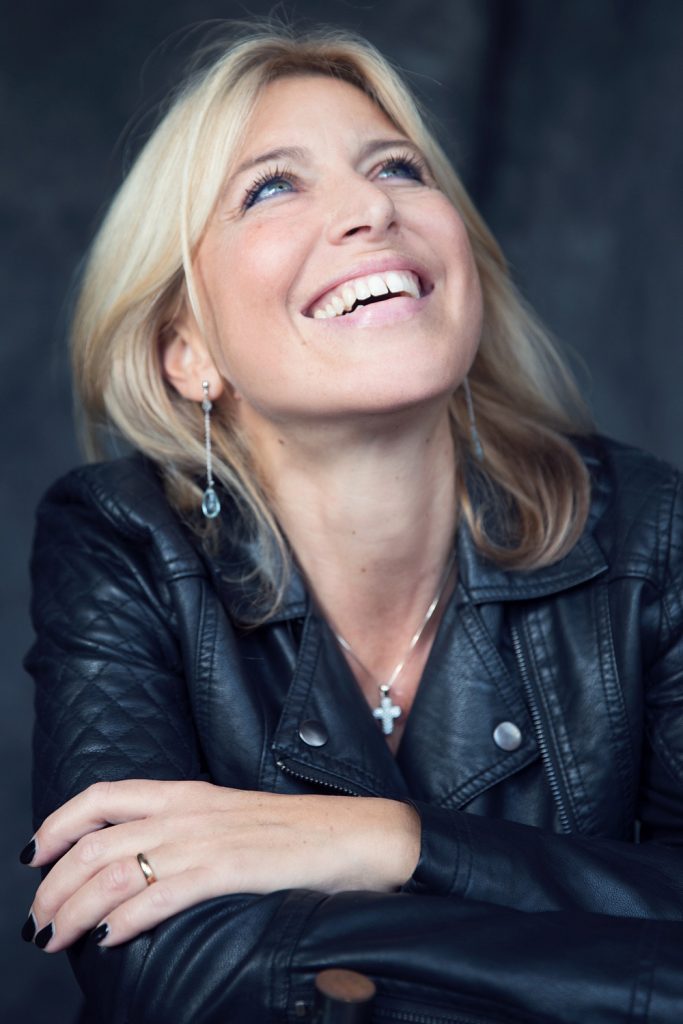 The themes currently in the artistic poetry of Stefania Zanutta master the sea,the roses and the daisies. For one of the fathers of depth psycology, C.G. Jung, “what we call a symbol is a term, a name, or a representation that may be familiar in everyday life and yet possesses specific connotations in addition to its conventional and obvious meaning. It implies something vague, unknown or inaccessible to us”. And “Since there are many things that go beyond the horizon of human understanding, we constantly resort to the use of symbolic terms to represent concepts that we cannot define or understand completely. This is one of the reasons why all religions and esoteric traditions employ symbolic language or images.” (C.G.Jung “Man and his symbols). Symbolism then would be the real key to understanding the spiritual and the psycological world.
The themes currently in the artistic poetry of Stefania Zanutta master the sea,the roses and the daisies. For one of the fathers of depth psycology, C.G. Jung, “what we call a symbol is a term, a name, or a representation that may be familiar in everyday life and yet possesses specific connotations in addition to its conventional and obvious meaning. It implies something vague, unknown or inaccessible to us”. And “Since there are many things that go beyond the horizon of human understanding, we constantly resort to the use of symbolic terms to represent concepts that we cannot define or understand completely. This is one of the reasons why all religions and esoteric traditions employ symbolic language or images.” (C.G.Jung “Man and his symbols). Symbolism then would be the real key to understanding the spiritual and the psycological world.
Man would indeed need symbols to grab what otherwise would not be represented, he himself would produce them unconsciously and spontaneously (for Jung symbols would be infact the language of the unconscious and dreams his means of communication).The symbolism of the sea speaks of rebirth and binds to the amniotic fluid of the womb that plunges us for nine months and then makes us emerge into life. The water in fact leads us to slow our rhythm, to listen silently to the emotions and the feeelings of our body, bringing us back to the origins, in other words to a completely natural situation without external conditionings.
Water is expressed as a cosmic feminine principle, soul of the world, Mother par excellence, the Mother of life. It’s the element that connects spirit and matter. If water is the symbol of life and life is born from love, then water is also a symbol of love, that, like water, embraces without clenching. So water is the most appropriate theme Zanutta could study and deepen. Water speaks of love, it’s the symbol of the mother, and so of the family: therefore I wanted to investigate the author’s biography, in order to understand how her life affects her expressions and all the love surrounding her and living in her comes out through her art.
The creative moment becomes principle of the externalization of a strong emotion that has to find an outlet. Often displaying a feeling experienced by the artist is not clear, it exists, it is a small embryo that, if fed, takes shape and, got strong, gathers its energy and drives Stefania to externalize through her painting; at this point another thing comes into play: the canvas, that hosts the author’s emotion driving her to its “filling”.
The pictorial means is then the best way to externalize the emotions Zanutta has in her everyday life. Many are the situations that make her heart Pulsate and vibrate and she achieves these notes through the brush and the materic character of her paintings. Then moving on to the technical and artistic experimentation, implemented through this cycle of painting by the artist, in addition to the incessant search for light, transparency and of the armony of colours, but also of the perspective and of the harmonic balancing of proportions, the materials she uses as acrylics, crystals, chalk, etc., create a two-dimensional character and symbolically illustrate the different “moods” of the sea itself: calm or agitated, viewed from the above or reproduced in a descriptive cross-section of its essence.
The continuous scream to life and love takes another form when Zanutta has a request from a client for the execution of a panting for a couple celebrating a second marriage; she chooses a symbol respectful of such an event: the knot. But again the canvas and her art decide for her: that plaster “knot”, shaped with so much care, doesn’t want to be a simple knot and decide to go beyond, to get Zanutta’s initial idea, showing itself to be a perfect rose.That was the start to the cycle of the roses: on the base of the colour used for the realization of the flower, the artist expresses purity, passion o coquetry. The roses follow a specific scheme in relation to their positioning on canvas, even if always driven by the instinctual part, from her mind to the material realization. Stefania with the cycle of the roses has real fun and unconsciously actuates those creative games played as a child with her mother and her sister.
Autobiographic and spontaneous is the cycle of the daises, too. Daises have always been part of the author’s life, coming with her, in an absolutely instinctive way, in her most important day: the protagonists of her wedding dress, of her wedding bouquet and of a detail of her husband’s suit were daises. Only later Stefania discoveres what she considers the origin of this: the last vision her maternal grandad had before dying, a delightful lawn of white daisies.
In the spring of 2017, another heart surgery gives the artist Her Future: the quality of her life improves radically! So, as soon as she finishes her convalescence, she started the “Life!” cycle, where bold, bright, vivid and full of energy tones, taking entirely up the canvas in a sort of charged dance, are the protagonists.
The last thing to underline in Zanutta’s art is her signature, a symbol as well: a small heart, slightly extended on the bottom with a small eye, which is like a peephole who invites the viewer to look into her heart by filtering everything trough a PULSATION OF LOVE.
Raffaella Ferrari
Art critic
